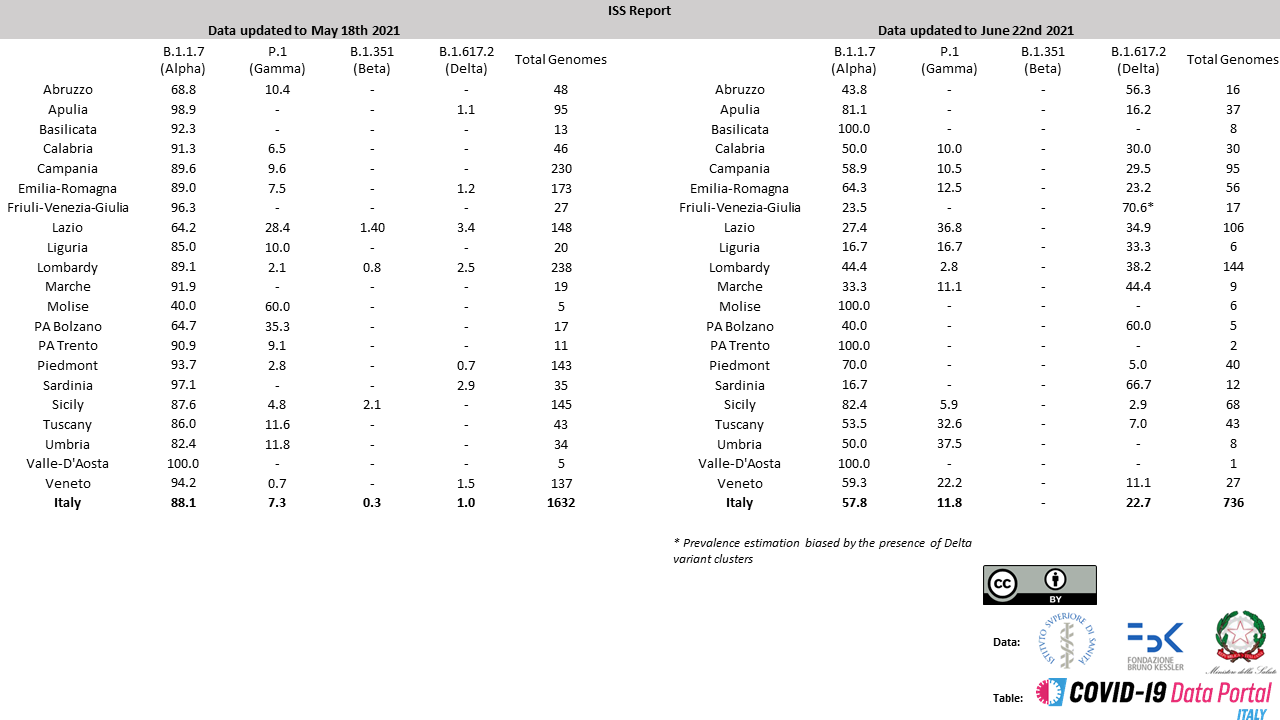Overview of the prevalence of SARS-CoV-2 variants of epidemiological concern in Italy (adapted from the fourth ISS genomic surveillance report)
Published: 17 July 2021
This highlight provides a brief overview of the main results presented in the most recent report (data updated to June 22nd 2021). Data from the previous report (May 18th 2021) are also included to facilitate the comparison.

Prevalence data are stratified by Region/Autonomous Province, the total number of genomes used is reported too. Aggregated data are also reported to offer an overview of the current situation in Italy.
Matched data derived from the previous report are included to facilitate the comparison (May 18th 2021).
By comparison with the data from the most recent ISS report, it clearly emerges that Alpha variant (B.1.1.7) by June 22nd was still the most prevalent in Italy, and was detected in each single Region/PPAA. However, a sharp decrease in the prevalence of Alpha from 88.1% to 57.8% (regional range varying from 16.7% to 100%) is observed.
A concomitant increase in the prevalence of the Delta variant (B.1.617.2) from 1% in the previous report (data updated to May 18th 2021) to 22.7% in the most recent analysis (data updated to June 22nd 2021) is also detected. Delta was identified in 15 distinct Regions and 1 PPAA with a regional prevalence ranging from 0% to 70.6%. However, it should be noted that this could represent an overestimation of the actual prevalence, especially because of territorial outbreaks which, once identified, are carefully traced.
Finally, a slight increase in prevalence (11.8% vs 7.3%) can be observed also for the Gamma (P.1) variant, whereas the prevalence of B.1.351 is close to 0%.
To obtain more information concerning the data included in the report, the methods applied and the technical limitations of the survey, please refer to the complete report and the detailed analyses available on the ISS website.
Documentation about the most recent report is available at the following link (italian only):
Documentation about the previous report is available at the following links (italian only):
Sources: ISS (prevalence data)